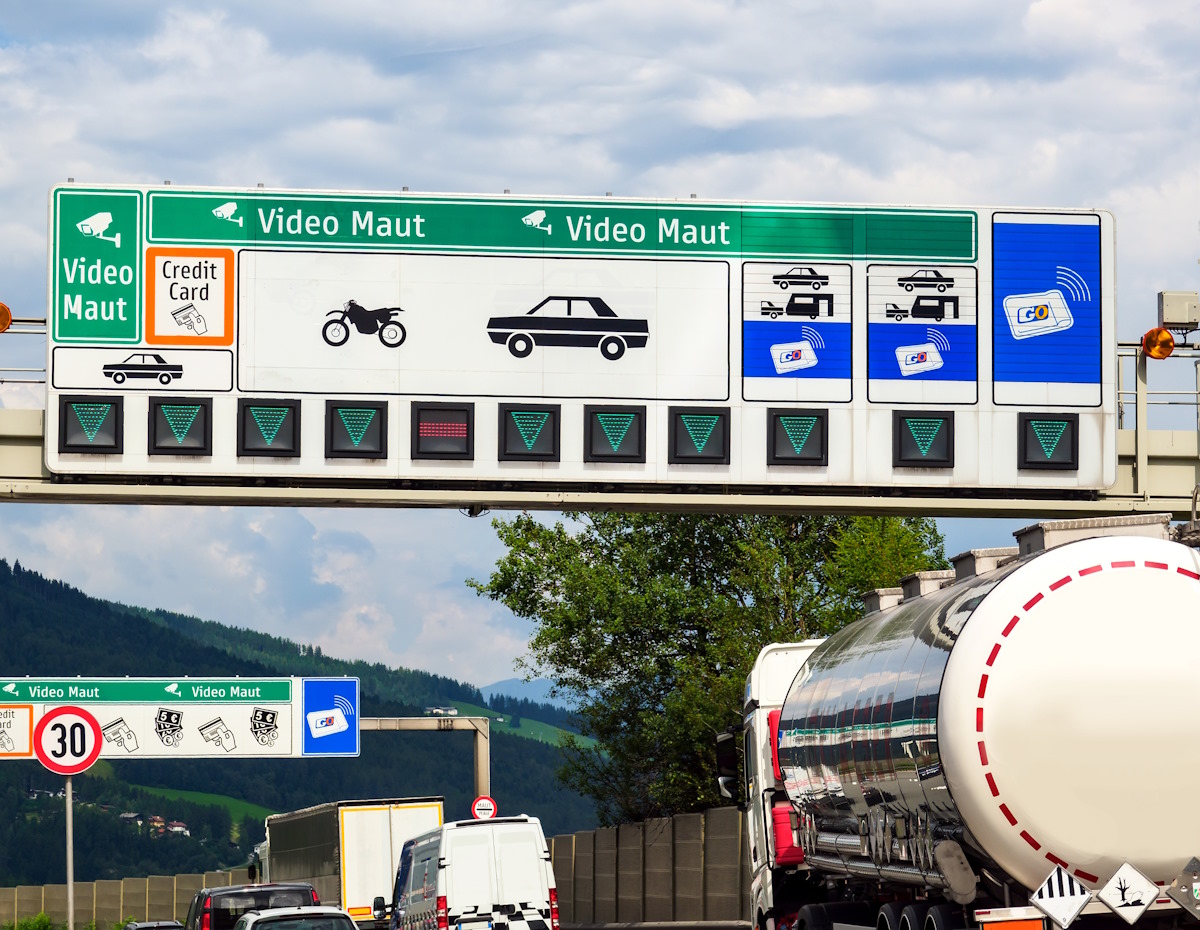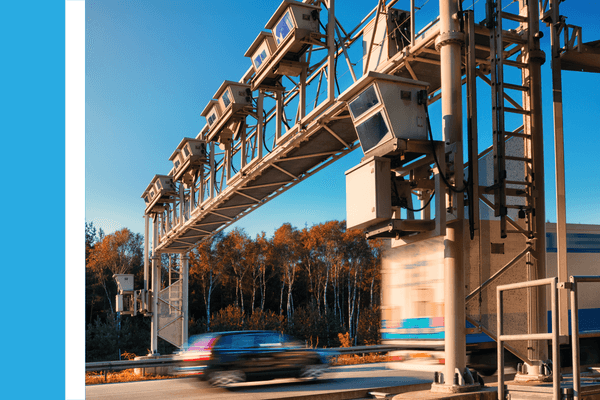What is a digital route toll?
Electronically operated toll collection, also known as digital route tolling,
records and charges for the use of selected road sections or motorways.
by Florian König, mautwelt.de - June 6th 2023
Unlike traditional tolling systems, where motorists must stop to pay at toll booths and pay by cash or credit card, digital route tolling allows tolls to be collected automatically.
In a digital route tolling system, an electronic toll booth is usually installed along the road or motorway in front of bridges, tunnels or other special sections of road. This toll station is equipped with cameras to identify vehicles and record their passage. The charges incurred are then automatically debited from the driver's linked account or credit card.
Digital registration of the vehicle
When purchasing the digital route toll card, no real card on paper is issued. Instead, the vehicle registration number provided by the customer is digitally recorded in the system and matched with that of the entering vehicle at the toll station. If a driver enters this lane unintentionally or if the licence plate is not recognised (e.g. due to heavy soiling), it is possible to exit before the toll station and join the normal lane for payment with cash or credit card. This ensures smooth processing and offers every motorist a convenient and flexible solution.
Digital road tolling systems offer numerous benefits: They optimise traffic handling by avoiding stops at toll booths, while reducing the need for physical infrastructure such as toll booths or barriers. Another advantage is the possibility of offering flexible tariff models that can vary according to demand. For example, staggered prices at peak times or special charges for certain types of vehicles can be set.
It should be taken into account that digital road tolling systems may be used in different ways in different countries and regions. While some countries already use such systems, others still rely on conventional tolling systems.

Route-related tolls in Austria
In some countries, such as Italy and France, a route-related toll is charged instead of a vignette. At designated points, such as in Austria for the A13 Brenner motorway or the A10 Tauern motorway, it is customary to pay the route toll due on the spot.
The system of digital route tolls in Austria, which is operated by ASFINAG (Autobahn- und Schnellstraßen-Finanzierungs-Aktiengesellschaft), makes it possible to optimise the process of paying special tolls on Austria's roads. Thanks to the digital route toll, it is no longer necessary to stop at the toll station, but you can drive through a specially marked lane, which is controlled by means of video surveillance. The vehicle registration number is automatically matched and the passage is cleared.
The digital route toll system was introduced step by step from 1991 onwards and was originally intended exclusively for holders of annual passes. For some time now, however, it has been possible to use the electronic toll system for individual journeys as well.
The digital route toll is available in various options: It is available either for a single trip (1 trip or 2 trips) or as an annual pass. The single trip can be used and is valid for one year from the date of issue, the annual pass can be used for 365 days from the date of first validity.
When you purchase the digital route toll, your car registration number is recorded. At the toll station, you have the choice of using any open clearance lane or the lane marked green (except for the specially marked GO lane!). The system electronically recognises your previously stored number plate and opens the barrier automatically.
The Digital Route Toll offers travellers the following advantages:
- Time saving
With the digital route toll, you can simply drive through the specially marked green lane or any open clearance lane (the GO lane cannot be used!). The barrier at the toll station opens automatically when you enter. - No payment on the spot
The digital route toll saves you having to search for the right change or credit card at the toll station. As a result, there are significantly fewer traffic jams when driving through.

Functioning of the digital route toll
The way the digital route toll works is simple: at the time of purchase, the vehicle's number plate is registered in a database. In this way, it is possible to use one of the open clearance lanes, as the system automatically recognises the vehicle's number plate by means of video number plate surveillance. The barrier opens automatically, without any further waiting time or any paper formalities.
The digital route toll tickets for Austria are available for the Pyhrn, Tauern and Brenner motorways as well as the Arlberg tunnel and the Karawanken tunnel. With these, you can easily pass through the toll booths at a maximum speed of 15 km/h without stopping.
The digital route toll ticket is valid for one year from the date of issue and can be used in all open car toll lanes - both in lanes manned by toll staff and in those with blue route toll machines or orange credit card machines.
The only exceptions are the separately marked GO lanes, which are only accessible to GO toll customers and may not be used with the digital route toll ticket.
